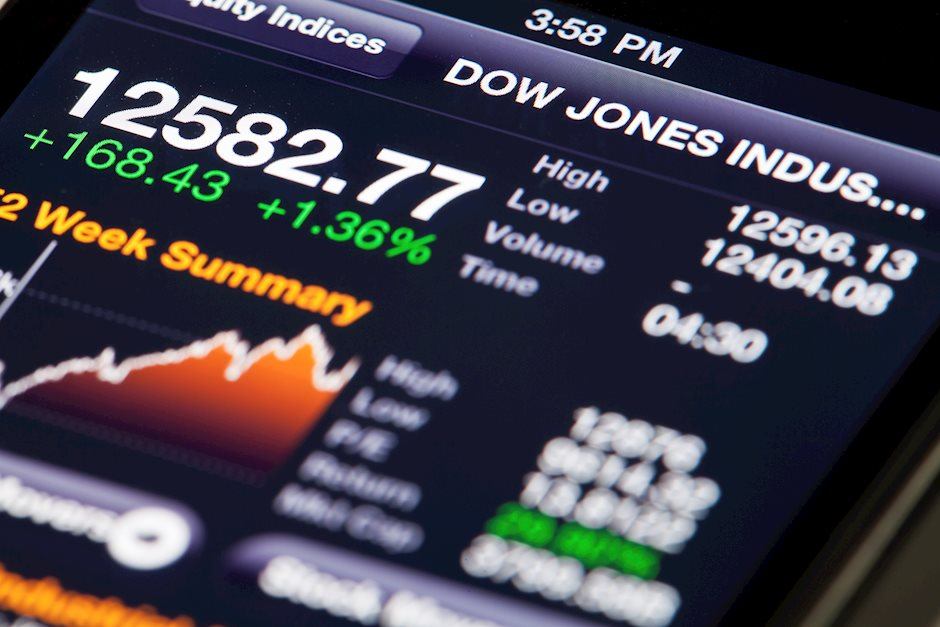Dow Jones Industrial Average Forecast: Rise in job openings sends DJIA plunging as Treasury yields soar
- The Dow Jones Industrial Average crashed 1.29% on Tuesday.
- JOLTS data for August surprised to the upside, showing the labor market stronger than many realized.
- US House Speaker McCarthy was kicked out of his job, making November funding fight less certain.
- Treasury yields are implying that the Fed will raise interest rates before year-end.
- Friday’s Nonfarm Payrolls data could tip equity market even lower.

The Dow Jones Industrial Average (DJIA) opened higher on Wednesday, up 0.2%, as traders test whether Tuesday’s crash was overdone. The market is digesting the first time in history that a US Speaker of the House was voted out of office and how that will affect current budget talks. Additionally, the Nonfarm Payrolls (NFP) report on Friday has many market participants expecting a market-negative result of rising employment numbers.
The Dow closed another 1.29% lower on Tuesday and is already down further in just two trading sessions than the entirety of last week, when it sold off 1.34%. The DJIA is now down 7.5% since its late July range high.
Tuesday’s loss of confidence was due to JOLTS Job Openings data for August, which was much more robust than expected. Analysts had expected the reading to drop from July’s 8.9 million to 8.8 million in August. Instead, the August print came above 9.6 million. This data overshadowed last week’s reduced inflation print from the Personal Consumption Expenditures report, and many observers now think it a greater likelihood that the Federal Reserve raises rates before the year is out.
That news sent Treasury yields zooming higher, with 30-year Treasuries reaching 5% for the first time since 2007. Higher US Treasury yields often correlate with a sell-off in the S&P 500 as the higher yield gives them a better risk-return profile than the equity market. The 30-year has fallen 1.2% on Wednesday at the time of writing, dropping back to 4.88%.
Dow Jones News: McCarthy out as House Speaker
Late Tuesday, Speaker of the House Kevin McCarthy (R-CA) was ousted from his role – the first time this has occurred in US history. Normally, House Speakers leave their roles due to their political parties losing the majority or deciding to retire.
This time it occurred because a small cadre of his Republican caucus chose to vote him out on the pretense that he had used Democratic Party votes to pass a continuing resolution to fund the federal government last week. With the continuing resolution, the federal government was set to shutdown operations last Sunday. Many pundits think McCarthy’s opponents, like Florida Representative Matt Gaetz, purposefully caused last week’s budget impasse in order to force McCarthy to court the opposite side of the aisle. In that sense, it may have been a self-fulfilling prophecy, Gaetz wanted McCarthy to seek Democratic votes in order that Gaetz and his triggermen had a reason to bring McCarthy’s speakership to a vote.
Either way, last weekend’s continuing resolution, which funded the US federal government for 45 days, will run out in mid-November. That means the House of Representatives has no leader at a critical time when it needs to negotiate 12 separate spending bills for longer-term funding.
Before last week’s last-minute continuing resolution, ratings agencies had already telegraphed that a federal government shutdown would lead them to downgrade US government debt. This move could further raise Treasury yields, thus hurting equity values, as some investors on the margin would certainly decide to sell off their Treasury holdings.
September Nonfarm Payrolls could disappoint with higher reading
Due to the JOLTS data from Tuesday, the market is poised for Friday’s Nonfarm Payrolls reading for September to jump above the 170K that analysts have been expecting. Recent months have seen the NFP slinking below the 200K level that analysts believe is roughly neutral. August saw a reading of 187K.
However, before the stock exchanges opened on Wednesday, ADP reported its Employment Change reading for September. The print arrived at 89K, way under the 153K that economists expected and August’s 180K reading. The ADP release is often uncorrelated with the more stringent NFP data, but it will make traders wonder.
For the NFP, both June and July’s data was revised lower after initially much higher readings. June’s initial reading showed 209K net new hires but was later revised to 105K. July’s initial 187K reading was revised to 157K. These lower revisions are viewed positively by the market since reduced employment growth should cut the chances of inflation frightening the Fed into hiking interest rates still higher.
In addition to estimates for the number of new jobs, the NFP data from the Bureau of Labor Statistics also includes Average Hourly Earnings. This data is expected to grow 0.3% on a monthly basis and 4.3% on an annual basis. It grew at 0.2% MoM in August and 4.3% annually.
S&P 500 FAQs
What is the S&P 500?
The S&P 500 is a widely followed stock price index which measures the performance of 500 publicly owned companies, and is seen as a broad measure of the US stock market. Each company’s influence on the computation of the index is weighted based on market capitalization. This is calculated by multiplying the number of publicly traded shares of the company by the share price. The S&P 500 index has achieved impressive returns – $1.00 invested in 1970 would have yielded a return of almost $192.00 in 2022. The average annual return since its inception in 1957 has been 11.9%.
How are companies chosen to be included in the S&P 500?
Companies are selected by committee, unlike some other indexes where they are included based on set rules. Still, they must meet certain eligibility criteria, the most important of which is market capitalization, which must be greater than or equal to $12.7 billion. Other criteria include liquidity, domicile, public float, sector, financial viability, length of time publicly traded, and representation of the industries in the economy of the United States. The nine largest companies in the index account for 27.8% of the market capitalization of the index.
How can I trade the S&P 500?
There are a number of ways to trade the S&P 500. Most retail brokers and spread betting platforms allow traders to use Contracts for Difference (CFD) to place bets on the direction of the price. In addition, that can buy into Index, Mutual and Exchange Traded Funds (ETF) that track the price of the S&P 500. The most liquid of the ETFs is State Street Corporation’s SPY. The Chicago Mercantile Exchange (CME) offers futures contracts in the index and the Chicago Board of Options (CMOE) offers options as well as ETFs, inverse ETFs and leveraged ETFs.
What factors drive the S&P 500?
Many different factors drive the S&P 500 but mainly it is the aggregate performance of the component companies revealed in their quarterly and annual company earnings reports. US and global macroeconomic data also contributes as it impacts on investor sentiment, which if positive drives gains. The level of interest rates, set by the Federal Reserve (Fed), also influences the S&P 500 as it affects the cost of credit, on which many corporations are heavily reliant. Therefore, inflation can be a major driver as well as other metrics which impact the Fed decisions.
What they said about the market – Omar Slim
Omar Slim, the portfolio manager at Pinebridge Investments, said the equity market is only now coming to terms with the Federal Reserve’s determination to hold interest rates at the current high pitch through the first half of next year. This recognition is forcing Treasury yields higher and making equities less attractive.
"I think what we’re seeing is the ‘higher for longer’ narrative permeating the market to a large extent in the US but certainly also in the rest of the world. [...] I think what would stop it is a pretty decisive turn by the Fed or some of the data pointing to a substantial slowdown.”
Dow Jones Industrial Average forecast
The Dow Jones has broken through a number of possible support levels of late. First, 34,029 fell on September 22. Then 33,700 gave way on September 26. On Tuesday, 33,400 failed, and the DJIA closed all the way down at 33,000.
There is no real reason for the index to bottom at this big psychological number however. Expect another wave of selling to push it down to at least the 32,500 to 32,800 demand range. This band held up in late February and in May of this year. When it faltered in late March, however, the Dow Jones slid to support at 31,600.
The Relative Strength Index (RSI) gives the Dow Jones an oversold reading, 26, so some technical traders might begin nibbling here. The DJIA will need to overtake 33,700 before most traders conclude that the sell-off is over.
Dow Jones Industrial Average daily chart
Premium
You have reached your limit of 3 free articles for this month.
Start your subscription and get access to all our original articles.
Author

Clay Webster
FXStreet
Clay Webster grew up in the US outside Buffalo, New York and Lancaster, Pennsylvania. He began investing after college following the 2008 financial crisis.

















